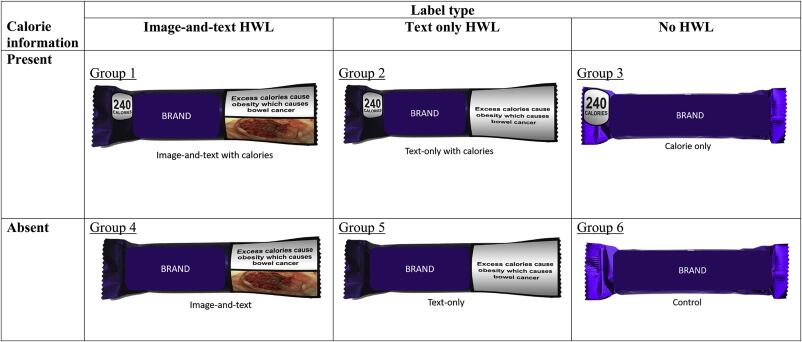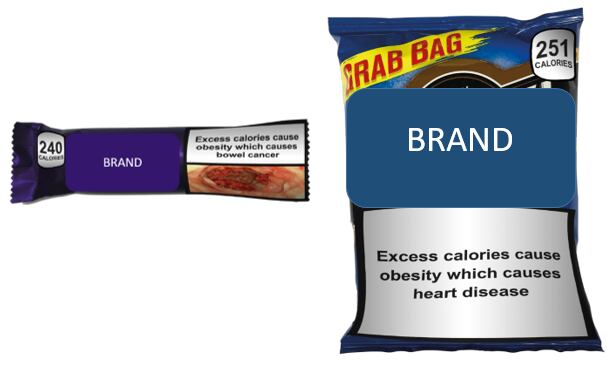Health warning labels (HWL) are mandatory on tobacco products in several countries, including Australia, Canada, and the UK. In these countries, evidence suggests that image and text warnings can generate negative emotions and discourage consumers from purchasing tobacco.
Yet despite these positive correlations, HWLs remain largely reserved for the tobacco sector.
What if HWLs were extended to food products – and more specifically, to energy-dense products? How might consumers react? And could such labels be employed as another weapon in the fight against the obesity?
A team of researchers from the University of Cambridge and the University of Bristol have investigated just that in a fresh study published in Appetite this week.
“Graphic health warning labels on tobacco packaging are effective in changing smoking behaviours,” said study author Natasha Clarke from the University of Cambridge. “There is a continued policy and public interest in improved labels on food, including warning labels, and the aim of our research was to investigate whether they can be effective on these products.”
Obesity: the facts
Since 1975, the prevalence of obesity worldwide has tripled.
According to 2016 figures, 61% of adults and 29% of children in the UK are classified as overweight or obese.
Excess weight is a risk factor for several diseases, with obesity being the second most preventable cause of cancer after smoking. It also increases the risk of heart disease and type 2 diabetes.
According to the World Health Organization (WHO), a key cause of rising obesity rates is the rise in consumption of excess energy from food, particularly from high fat, energy-dense and nutrient-poor foods.
Text, image, calorie information
It is recognised that multiple interventions are required to combat the obesity pandemic. One potential intervention could be to discourage consumption of energy-dense products with food labelling strategies.
Such labels could display combinations of health warning texts, health warning images, and calorie information. The latter is currently available back-of-pack for most food products, yet less frequently available front-of-pack (FOP).
The UK study therefore conducted an online survey to investigate consumer reactions to various labelling scenarios and compare them to current product labelling without health warnings or calorie information FOP.
In total, 4134 people completed the study. Participants were aged over 18 and regularly consumed energy-dense snacks such as biscuits, cakes, chocolate, or crisps, at least once a week.
Results revealed that energy-dense snack selection was lower for all label types, compared to no label. Therefore, it could be presumed that all labels decreased the odds of selecting an energy-dense snack.
More specifically, image and text HWLs (37%) were more effective in decreasing energy-dense snack selection compared text-only HWLs (46%), calorie information alone (54%) and no label (59%).

Concerning calorie information FOP, findings revealed that without HWL, the presence of calorie information increased effectiveness only slightly (5% decrease in energy-dense snack selection).
Calorie information accompanied by text-only HWL had even less of an impact (4%), and no additional impact in the presence of an image-and-text HWL (1% increase).
Implications for the food industry
Despite the effectiveness of HWLs on food choice in the experimental study, the researchers believe it would be too early for governments to make such labelling strategies mandatory. It may also be premature for the food industry to implement voluntary HWLs.
Looking beyond acceptability of the labelling schemes, another important factor to consider is the potential for HWLs to lead to unintended consequences, noted the study authors, such as weight stigma, which can have a negative impact on health.
“Our focus is on generating evidence for the effectiveness of health warning labels on foods, before they are considered for implementation we need further research on whether they work in a variety of settings,” explained Clarke.
“We also need more research on their acceptability by the public, and on any potential adverse effects, such as obesity stigma, as there is some initial research that suggests graphic warnings on sugary drinks can lead to increased stigma.”
More research is required to determine how such labelling schemes would work on food products in real-life scenarios, she stressed.
“This study was conducted in an online hypothetical scenario, where labels were displayed on images of products and participants did not receive the snack they selected, so we cannot draw conclusions about whether or not they would work on food products in other settings. Before we do that, we need studies in more naturalistic real-world settings.”
Source: Appetite
‘Impact of heath warning labels on snack selection: An online experimental study’
Published online July 2020
DOI: https://doi.org/10.1016/j.appet.2020.104744
Authors: Natasha Clarke, Emily Pechey, Eleni Mantzari, Anna K.M. Blackwell, Katie De-loyde, Richard W. Morris, Marcus R. Munafo, Theresa M. Marteau, and Gareth J. Hollands.



